I still remember my first ball python (Python regius).
I had already kept a few snakes, but they were all quite nippy. So, I was quite happy to pick up a ball python, as the species is famous for being gentle.
On the way home from the pet store, I stopped to pick up my little sister from school. I was so excited about my new ball python that I took the snake out and started telling her all about it.
“Unlike many other snakes,” I bragged, “this one is very tame. In fact, ball pythons are probably one of the tamest species in the worl…”
But before I could finish the sentence, the snake struck out and bit me directly on the nose.
It was a very minor bite, but it taught me a very important lesson about snakes:
Species often exhibit broad tendencies, but each animal is an individual, with its own motivations, predilections, and needs. Keep this in mind as we discuss ball pythons in the following paragraphs. The care regimen discussed will certainly work for the majority of ball pythons. But you’ll occasionally have to make adjustments to ensure an individual snake thrives.
So, it is important to learn all you can about ball pythons before you purchase one. This will give you the best chance of keeping your new pet healthy and happy.
My initial sentiment was correct – ball pythons are typically very docile snakes. However, that particular ball python would go on to bite me for years, proving that you have to be ready for anything when keeping these awesome animals.
Ball Pythons: Quick Facts
Before we dig deep into the biology, behavior and care of ball pythons, let’s review a few of the most important facts about the species:
- Ball pythons are native to western and central Africa, where they primarily inhabit grasslands and open forests.
- Like most other pythons, ball pythons are nocturnal animals who are typically most active at night.
- Ball pythons are not venomous; they kill their prey via constriction.
- Ball pythons, like all other pythons, have thermal receptors around their mouths, which enable them to detect heat.
- An egg-laying species, ball pythons typically produce 2 to 10 eggs per year.
- Ball pythons use a combination of active prowling and ambush techniques to capture prey.
- If threatened by a predator, ball pythons will often roll into a tight ball to protect their head and neck.
- Although they are primarily terrestrial snakes, ball pythons occasionally climb trees and bushes.
- Most ball pythons are clad in a relatively characteristic pattern made up of black, brown and grey tones, but they still exhibit quite a bit of individual variation.
Ball Python Anatomy
Ball pythons have the same basic body plan as most other pythons, but they also exhibit a few features that are unique to the species.
For example, ball pythons have relatively thick bodies relative to their length. However, they aren’t as plump as blood (Python brongersmai) or short-tailed pythons (Python curtus), nor are they round in cross-section – ball pythons have roughly triangular bodies.
On the other hand, ball pythons – like blood and short-tailed pythons – have very short tails. Unlike carpet and tree pythons, who have long prehensile tails that aid in climbing, ball pythons have stout tails, which aren’t particularly prehensile.
Ball pythons also have relatively narrow necks. And although the purpose of this anatomical adaptation isn’t conclusively understood, some hypothesize that thin necks help ball pythons constrict prey in the tight burrows and termite mounds in which they often hunt.
Finally, like most other pythons, ball pythons possess “spurs” on both sides of their vents.
Spurs are the vestigial remnants of rear legs. They are not used for locomotion, but they are sometimes used during breeding – the males will claw at the sides of a female to help move her into the proper position. Males typically have slightly larger spurs than females, but there are exceptions.
Gender: How to Sex a Ball Python?
If you want to accurately determine the sex of a ball python, you’ll typically need to use a stainless-steel probe to examine the inside of its cloaca. This requires a bit of skill and knowledge about ball python anatomy, so this is a task best left to experienced keepers and vets.
Male ball pythons, like all other male snakes, have paired reproductive organs, called hemipenes. These hemipenes normally reside inside the tail base of a male, in an inverted orientation. When it is time to breed, the snake will evert one of the hemipenes, and insert it into the cloaca of a female.
Accordingly, when a steel probe is inserted into the tail base of a male in the proper manner, it will travel down the inside (technically the outside surface, as the hemipenis is inverted) of the hemipenis. This will allow the probe to penetrate relatively deeply.
By contrast, when inserted into the base of a female’s tail, the probe will enter a shallow accessory gland, instead of a hemipenis. This means the probe will not travel very far into the tail base of a female.
Alternatively, you can determine the sex of young ball pythons through a method known as “popping.” This involves applying gentle pressure on the base of the tail. When this happens, the hemipenes of males will typically evert (or “pop out”), allowing you to identify the animal as a male. No hemipenes will be visible when a female’s tail is popped.
Size & Weight: How Big Do Ball Pythons Get?
Ball pythons are typically regarded as small to medium-sized snakes. Most ball pythons reach total lengths of between 3 and 5 feet, although the occasional specimen may approach 6 feet in length. Ball pythons are sexually dimorphic, as females usually reach much larger sizes than males.
Male ball pythons become sexually mature when they reach about 500 to 700 grams in weight. Females become mature at slightly larger sizes, and they usually weigh 900 to 1,500 grams before they are capable of breeding successfully.
However, ball pythons usually continue to grow throughout their lives (although their growth rate slows considerably). And, if provided with enough food, the occasional female will reach 5,000 grams in weight or more.
Lifespan: How Long Do Ball Pythons Live?
Most pythons have relatively long lifespans, and ball pythons are no exception. Little is known of their typical lifespan in the wild, but captive individuals undoubtedly reach older ages than their wild counterparts on average.
A number of factors will influence the lifespan of a given individual, but most ball pythons will live for at least 10 years if provided with a suitable habitat, healthy diet and any necessary veterinary care. Many will live for twice this long, and a handful of individuals have been documented reaching 30 years of age or more.
The oldest documented ball python died at 47 years of age.
Health & Behavior: What Is Common and What Is Unusual?
Ball pythons exhibit a variety of common behaviors, with which keepers must become familiar. This will help you identify potential problems early, while they are still easy to treat.
A few of the most important behaviors and husbandry approaches you should note include:
- Calm ball pythons will generally move around in a slow, deliberate manner while flicking their tongues.
- When frightened, ball pythons may curl into a ball, retract their heads into an “S-coil,” hiss or flee.
- Although they are generally not aggressive, ball pythons may bite if frightened.
- Ball pythons shed periodically. Sometimes they may do so as often as every 3 weeks. And at other times they may only shed once or twice per year.
- You can handle your ball python regularly, although you should never do so immediately following meals. It is also important to keep handling sessions brief.
- Your ball python will likely spend a great deal of time hiding in one of the shelters you provide. However, they’ll often prowl about for food (particularly at night) from time to time.
Ball Python Illnesses
Ball pythons are generally healthy animals (particularly captive-bred individuals). But they can occasionally succumb to illness. Ball pythons rarely exhibit symptoms until their illness is already at an advanced state, so it is important to seek veterinary assistance any time your snake exhibits any of the following symptoms:
- Audible respiratory sounds (aside from typical breathing sounds), drooling, wheezing or blowing bubbles from the nose or mouth
- Blisters or wounds on the skin
- Food refusal lasting longer than one month (this is not necessarily a problem for older snakes, who typically eat without problem)
- Bleeding or discoloration of the mouth
- The presence of mites or ticks
- Constipation, diarrhea or any other intestinal problems that persist for more than one week
- Maintaining unusual body postures or positions
Additionally, it is always wise to seek veterinary assistance anytime your snake behaves in unusual ways. Such advice is admittedly vague, but it is an important facet of snake care.
🐍 Read More: The Ball Python Behavior & Health
Habitat: The Ideal Ball Python Enclosure
If you want your ball python to thrive, you must provide him with a suitable habitat. In fact, the vast majority of illnesses and injuries that befall captive ball pythons arise from problems relating to the enclosure provided.
You can read our in-depth guide to providing your ball python with a proper enclosure here. But we’ll explain the basics below:
- Your ball python will require a habitat that provides between 3 and 6 square feet of space.
- Ball python enclosures needn’t be very tall; 18 inches of cage height will typically suffice.
- Aquariums, commercially produced reptile cages, plastic storage boxes and custom-built enclosures can all provide a suitable enclosure.
- You’ll want to set up the heating devices in order to create a thermal gradient throughout the habitat.
- The hottest portion of the habitat should be about 95 degrees Fahrenheit during the day. The coolest part of the habitat should hover in the mid-70s.
- You can use lights to help make your ball python easier to see. But the ambient light entering the habitat will provide all of the light your snake needs.
- Your ball python enclosure will also need a suitable substrate. Newspaper, aspen shavings, orchid bark and cypress mulch are among the best options.
- Your ball python will require at least one hiding container. In fact, it is a good practice to provide your pet with several hiding containers, including one that contains damp
- You can put real or artificial plants in your ball python’s habitat, but it is not necessary.
Aside from preparing your ball python’s habitat, you’ll also need to keep the habitat clean. This means performing a daily spot-cleaning to remove any urates, feces or shed pieces of skin. You’ll also need to monitor the temperature, humidity and enclosure security on a daily basis.
🐍 Read More: The Ball Python Habitat
What Is the Ball Python Diet?
Like all snakes, ball pythons are carnivores who require whole prey to survive. In the wild, ball pythons typically consume rodents or birds, although small individuals may occasionally consume lizards. Commercially produced rats and mice are the best options for captive ball pythons.
And although most ball pythons are capable of killing and consuming live mice or rats, most hobbyists find that it is preferable to feed their snake pre-killed, frozen-thawed rodents. This will allows you to avoid stressing the mouse or rat. Also, feeding pre-killed rodents will prevent your snake from becoming injured as the rodent struggles.
Most snakes will thrive on a once-per-week feeding schedule, although it is always wise to tailor your snake’s feeding schedule to its age, reproductive condition and health.
We talk about this in greater detail here, but generally speaking, younger snakes can be fed more frequently, while older snakes may gain too much weight if fed once per week. Accordingly, it is often better to feed mature adults once every 10 days or so. Snakes being used in breeding attempts – particularly females – may, however, require more frequent meals.
Ball pythons may occasionally refuse food for a variety of reasons. For example, males often cease feeding for several months during the breeding season, and most ball pythons will refuse food while undergoing a shed cycle. However, ball pythons can also refuse food due to illness or injury.
So, while you needn’t panic every time your snake decides not to eat, it is important to keep good records and contact your vet if the fast lasts for a month or longer.
🐍 Read More: The Ball Python Diet
Price: How Much Does a Ball Python Cost?
Ball python prices vary by at least two orders of magnitude, and potentially three.
If you have access to the wholesale market, you may be able to purchase a hatchling ball python for as little as $10. However, most hobbyists will be limited to retail markets, in which ball pythons will usually bear price tags ranging from $20 to $75. Older ball pythons usually fetch prices between $50 and $300, depending on the animal’s sex, size, age, and appearance.
These prices are quite reasonable – particularly when you consider that your new ball python may live for 20 years or more. However, these prices are characteristic of “wild-type,” or “normal looking,” ball pythons, clad in typical brown, black and grey markings. This does not apply to any of the ball pythons that exhibit color or pattern mutations.
Often colloquially called “morphs,” ball pythons who display unusual colors or patterns are often in great demand. And once you gaze at a beautiful albino, caramel or piebald ball python, you’ll understand why.
But because of this demand, ball pythons exhibiting color or pattern mutations typically cost much more than normal-looking animals do. Some of the older color mutations, which have become relatively common in the marketplace, are available for only slightly more than normal-looking ball pythons.
For example, you can probably find a pastel ball python for almost the same price that you can find a nice-looking, yet “normal,” ball python. On the other hand, many of the rarest mutations command extraordinary prices, climbing into the five-digit range.
🐍 Learn more: Our ultimate guide on ball python cost
Definitely a Wonderful Pet
As you can surely see by now, there is a lot to like about ball pythons.
They’re very hardy animals, who usually have good temperaments and make undemanding captives. They grow large enough to be impressive, yet not so large that they present housing or feeding challenges. They’re also very attractive animals, who come in a variety of different forms to suit every taste.
But as with any other snake, you must learn as much as you can about your new pet to have a good chance of success. This will not only help you to care for a typical ball python, but it will better help you care for those who exhibit tendencies that are outside of the norm.
Just be sure to keep your nose out of striking range.

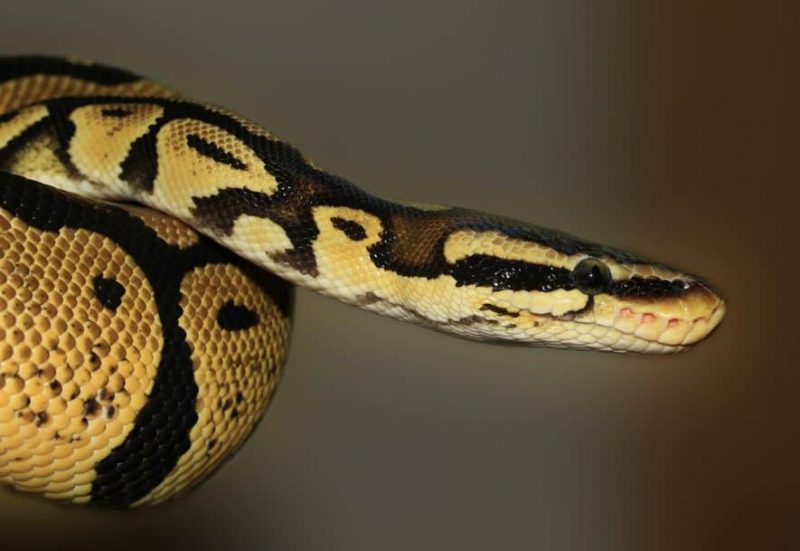








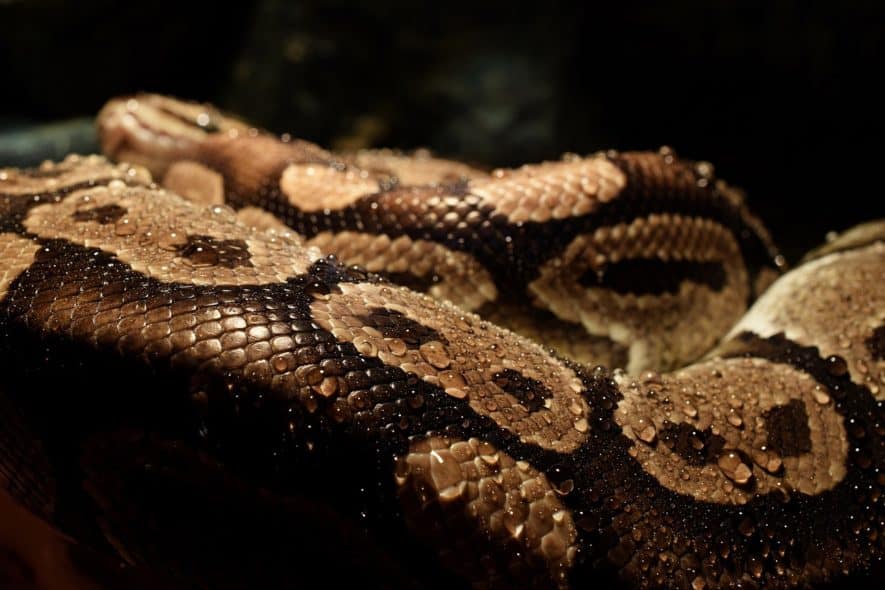
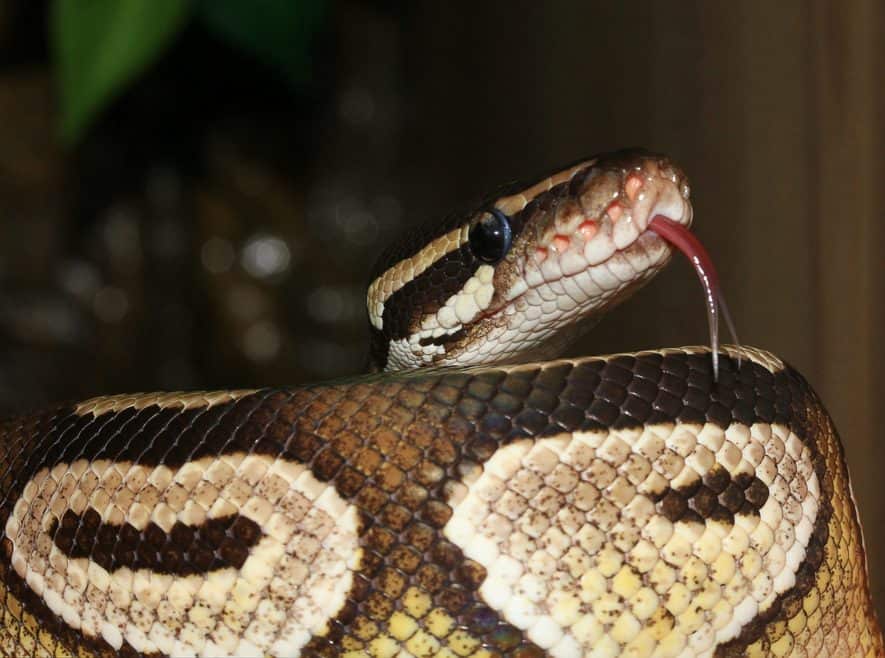
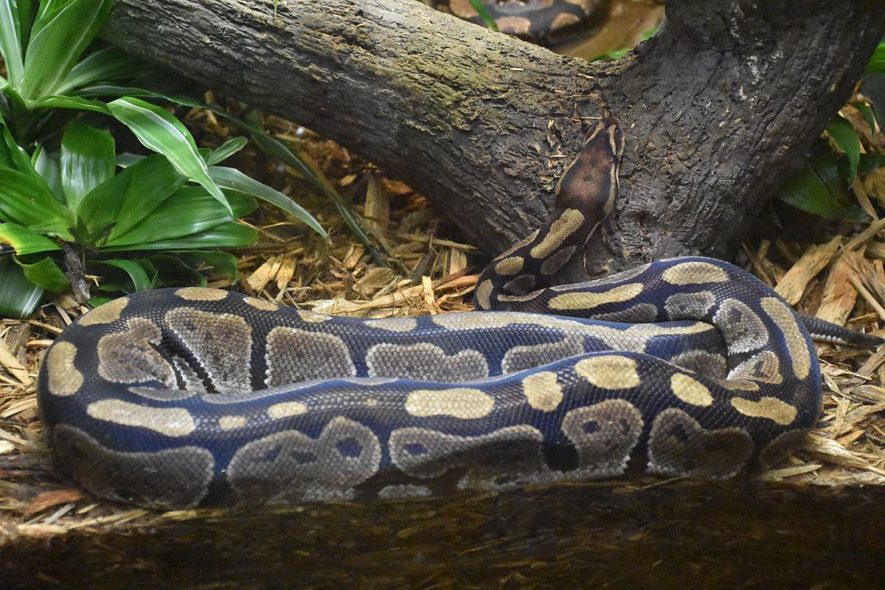
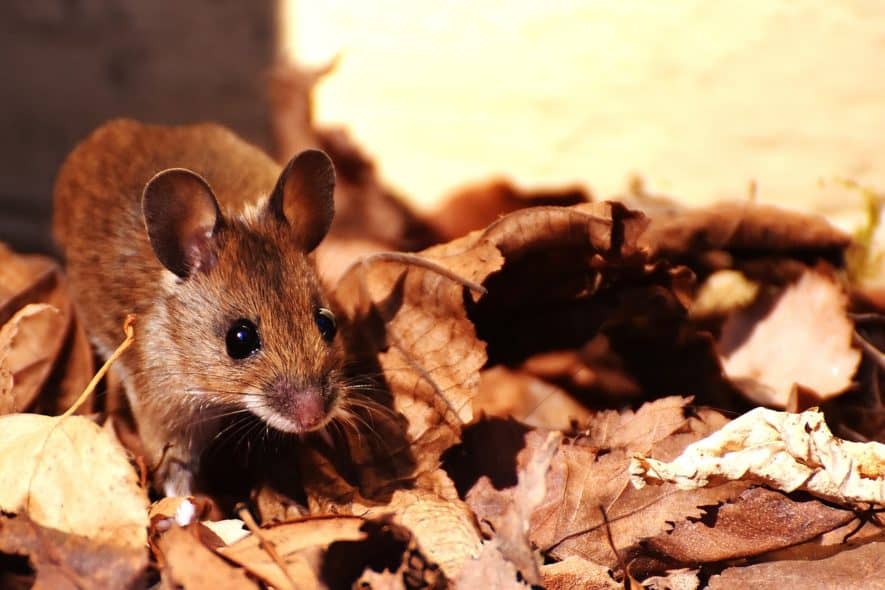
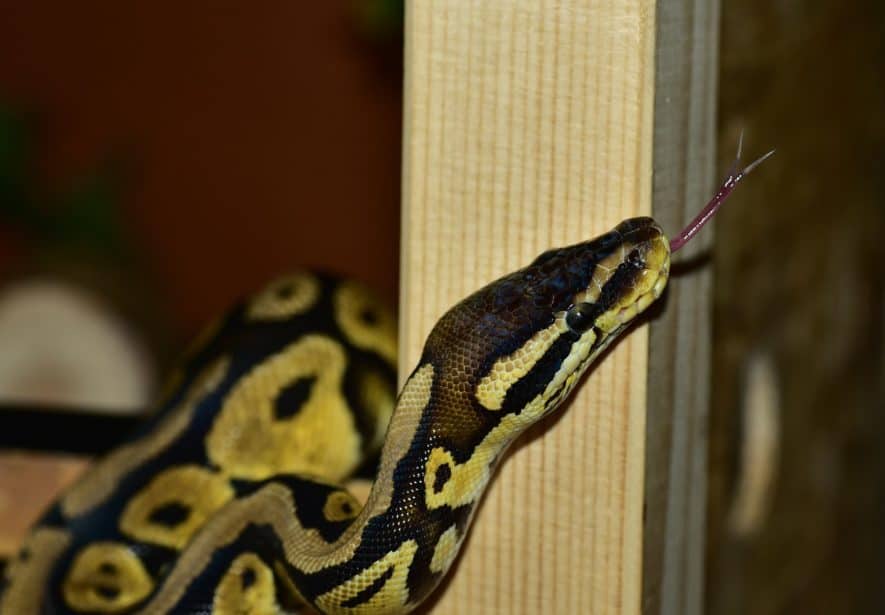
27 Comments
How far should a ball python stick out its tounge
Ball pythons will usually only stick out their tongues when they are trying to smell something in the environment, like a potential meal or threat.
Generally speaking, it’s best if your snake doesn’t extend its tongue too far because it can indicate stress or illness.
If you notice that your ball python is sticking out its tongue often, it’s important to talk to an experienced reptile vet as soon as possible. It may be a sign of something more serious that needs to be addressed.
Hi I’m am going to get a ball python in a few weeks or so I have been researching for a few months now. The ball python I have my eye on though is really pricey like 420 dollars it’s a banana lemon blast baby and is quite sweet something strange though is when I look online for the same morph they cost so much less I like this snakes personality but it’s really expensive is their anyway to know what the personality of a online ball python is before buying it ? Also i have pet rats and I’m planing on keeping them in the same room is this ok? For both my ratties and the noodle child ? I’ve seen ball pythons in pet stores kept right next to the rodent rack so it’s fine to keep the ball python on the opposite side of the room? This is all happening in my room/ pet room I have 6 rats 1 leopard gecko 4 guppies and 6 mystery snails and some isopods that have a beautiful morph 🙂 I also have 3 khuli loaches (fish)
Hey Newt,
It’s great that you have been researching and preparing for your new ball python. It is important to buy from a reputable breeder or seller to ensure the health of your snake. As for its personality, it’s difficult to gauge before buying it. You may try contacting the breeder or seller and asking them about the snake’s behavior and temperament.
However, it is not recommended to keep pet rats with a ball python as the presence of rats could stress both animals. If you must keep them in the same room, make sure to provide adequate distance between them and secure their enclosures properly for both animals’ safety.
Overall, ensure that each of your pets gets the proper care and environment they need to stay healthy and happy.
Good luck! 🙂
Hey! I’ve got a ball python female she is about 2 years old, healthy great habitat no problems until tonight! The pet store I her here mice from is having trouble with there supplier, so I had to get her a frozen mice for her i did as the instructions said we’ll when I was giving it to her she grabbed it then got in a very stiff position and stayed that way for maybe 10, 15 min I actually thought she broke her face by squeezing it she wouldnt let go of the mice I thought she was dead then out of nowhere she let’s up and eats very slowly! What happened?? Why did she do that, will she be ok???? Plz get back to me asap! Do I take her to vet?????
Hi Lorenzo,
I’m sorry to hear about your ball python female. It sounds like she was having a neurological reaction, which can be caused by stress or fright. This type of reaction isn’t uncommon in reptiles, but it’s good that you noticed it and took action quickly!
The best thing for you to do would be to take her to the vet as soon as possible, just in case there is something more serious going on. The vet will be able to give her a full examination and provide any necessary treatment.
In the meantime, try to keep her environment as stress-free as possible. Make sure she has plenty of hiding places and isn’t exposed to any loud noises or sudden movements. Provide her with a varied diet, and make sure the food you give her is properly thawed before feeding it to her.
I hope this helps, and I wish your pet a speedy recovery! If you have any other questions or concerns, please don’t hesitate to reach out again. Thank you!
I have a 23 yr old ball python that has literally 2 thickened and slightly raised scales. I have taken him to my vet and all they recommended was treating with betadine for two weeks. He ultimately shed but the scales remain the same. Any idea of what this might be or have you ever seen these type of scale abnormalities before? In my 23 years of owning him I’ve never noticed the scales before. My vet diagnosed him with a condition like in us equal to a clogged pore???? I’m not sure what to think. He eats fine, is active @ night, and generally in good health, so I think. I have never had any medical issues with him. I have owned many balls and have never seen this before. Thank you!
Hi Garry,
This could be a number of things and without seeing it for myself I cannot be certain, however, here are a few things it could be. Scale rot, in which case keep applying betadine and keep an eye to make sure that it does not spread. It could also be a fungal infection so again monitor it to make sure it does not spread. Mites can also cause raised scales, gently check to see if there are any parasites under the scales. Double check your temperatures and humidity are correct. If it begins to spread, get a second opinion from a vet.
I have a ball python. He is 4 years old and he escapes his cage at night. I have prevented him from getting out but, he is still trying to escape. Am I doing something wrong?
Hi Lillie,
Ball pythons are nocturnal (active at night), so moving around at night is fairly normal. He could be searching for food, how often do you feed him? Could you please tell me the size of your enclosure and the temperatures?
Agian this is a great site, only thing is I wish we had an area like a general or like off topic area to talk and share with each other and were able to post pics. Great work my guy 👍👍
Hi Donnie, Thanks for your nice comments! I love the idea! At the moment the site is on a break but we’ll come back soon!
I’m off to the pet shop in half an hour to get a baby ball python. my son has been researching snakes for a few months and i’m about to take the plunge and buy one! ill keep noses out of reach lol
i have found your information very helpful
Thank you …wish me luck x
Ball Pythons are shy snakes and it is always better to provide natural habitat to ball pythons within enclosure tank. I love the way you explained about ball Pythons care
Ball Pythons and Corn (Red-Rat Snakes) both are great for first time snake owners. However, I would also suggest that certain types of Kingsnakes be considered, too. They’re pretty, usually easy to maintain, and tame rather easily..
Hi there!
This is a really good article
Thank you very much for all the helpful information
I do have a question or more a concern, my husband and 7 year old son got a ball python while I stepped out the house for an hour lol so I didn’t really got a chance to prepare myself about having a snake.
As it is my first time getting close to one I found myself a lot more uncomfortable/ scared than I though. I’m trying each day to gently grab him but wanted to know if you think the snake can feel fear? Some how I feel like he does very sharp moves when I try to hold him..
lastly since my son is really comfortable with him I do have concern about the snake eventually going around his neck and that’s a very scary though for me
Any advice I would gladly take them!
If there’s a better way to grab / hold or something specific they don’t like
And is it ok to take him out the house (errands .. store.. things like that) my son have been asking as well.
Thanks so much in advance for any advice you can give me
Leena
Hi, Leena. Thanks for the kind words!
No one knows for sure, but I don’t think snakes can “feel fear.” They don’t have any mystical abilities – they learn about their world through some of the same senses we use (pythons also have the ability to “see” body heat, but that won’t help them figure out if your are frightened).
That said, nervous people interact with snakes in a different way than confident people do. This can cause the snake to feel less secure, and therefore more likely to become nervous himself. So, I’d recommend trying to keep calm when handling him to the best of your ability. And remember – the bite from a small ball python won’t cause much more than a few pin pricks. Stubbing your toe hurts much, much worse, and you don’t go through life fearing that, right?
As far as constricting around your son’s neck goes, I’d say that’s pretty unlikely to happen. Snakes don’t constrict things for no reason. But, it’s better to be safe than sorry, so I’d discourage him from doing so.
Finally, I would strongly discourage your son from taking the ball python out and about. Doing so will not only cause considerable stress for your son’s pet and expose the snake to temperature extremes, it can make other people very uncomfortable. Simply put, many people are frightened of snakes, and it is our responsibility as “snake people” to be mindful of this fact.
Best of luck!
I just got a ball python today. I bought the cage with a water bowl, rock dens, heat mat, heat lamp and the thermostat. I’m hearing about different temps and humidity control. I really need to know what the ideal temp and humidity r. I want to take care of my new baby in the best way possible. Anybody who owns one wanna help me out.
Hi Jessica,
You’ll find answers to your questions in our habitat article.
Thanks I am nine turning ten and wanting to get a snake my family member is wanting me to get one and he said that it’s my birthday present my birthday is 29 of 04 and I’m exited
Hi Kerri, I hope our guides will help you with your new pet. You might also be interested in our article about the best pet snakes.
Mate your the best thank you for the helpful info
I can’t believe no one has commented on this yet! This is a wonderful array of information, and accurate. All snakes have their own personalities and habits and you should definitely get to know your scale-baby’s own. Thank you for this well-written article. I already had snake knowledge, and I wanted to brush up on it and this is just wonderful. Thank you!
Thank you for the nice words Mat!
I think it’s great info I love snakes but my family won’t let me have one T-T
Very clear and concise article. It helped clear up a lot of my questions as I “inherited” my daughters underweight snake 1 month ago. There is a lot of information out there by enthusiastic but less knowledgeable herpetologists. thank you very much.
The ball python i got shes almost a yr old… A girl i kno got her n never got her out n my uncle ended up with her n she was like 2 months old at that time.. He had for like7-8months n he had to get rid of her do to his landlord n now i got her n shes been doing good..